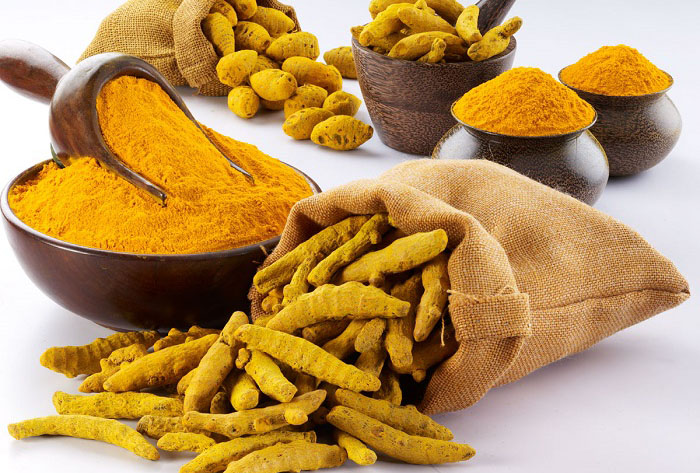PREVENTING CHRONIC DISEASE CAN BE ACHIEVED WITH TURMERIC

Anti-inflammatory, antioxidant, antiviral, antibacterial, antifungal, anticancer—that’s quite a lot to expect of a humble root of the ginger family. Like ginger, turmeric and curcumin (the powdered and supplement form, respectively, of the Curcuma longa plant) play center stage in millenia-old Asian medicine and cuisine. It wasn’t until 1949, however, that the West studied its scientific properties. In the magazine Nature, authors E. Schraufstatter and H. Bernt reported on the root’s ability to fight strains of Staphylococcus aureus, Salmonella paratyphi, Trichophyton gypseum, and Mycobacterium tuberculosis, and our curiosity hasn’t been sated since. Research always shows how turmeric can be especially effective at preventing chronic disease.
Treating and Preventing Chronic Disease with Turmeric
You might have caught Dr. David B. Agus on The Daily Show earlier this year. In his book, The End of Illness, he summarizes that low-grade inflammation is the root of most diseases, from heart disease to diabetes, Alzheimer’s to arthritis, cancer to allergies and acne. Turmeric—as you’ll see in the following research—therefore seems like a worthy ally in the fight against illness and disease, can can be used for preventing chronic disease.
Preliminary experimental research at the Medical University Graz in Austria shows how curcumin can protect the liver and delay liver damage that might otherwise lead to cirrhosis.
Kansas State University research finds a 40 percent reduction in heterocyclic amines—carcinogenic compounds formed when meats are barbecued, boiled, or fried—with the addition of certain spices, like turmeric.
Curcumin may inhibit melanoma and slow the spread of breast cancer into the lungs according to rodent studies at the University of Texas.
With the rate of Alzheimer’s disease in India being less than a quarter of that of the U.S., many epidemiologists hypothesize that turmeric—a staple for curry—has something to do with it.
An Italian study with 50 osteoarthritis patients found that after 90 days, 58% of those taking curcumin reported less pain and stiffness compared to control groups. Additionally, researchers determined a 300% improvement in mood and a 16-fold decrease in C-reactive protein (inflammation marker) in the curcumin group.
Using Turmeric and Curcumin
Dr. Andrew Weil (founder and director of the Arizona Center for Integrative Medicine), and other experts say that plants are usually better than drugs for overall health and preventing chronic disease, excepting extreme cases. With this in mind, you can incorporate a moderate amount of turmeric into your diet right in the kitchen. (And no, you don’t have to eat curry every day.)
Brew turmeric tea by bringing four cups of water to boil and adding one teaspoon of ground turmeric. Strain after 10 minutes and add honey or lemon to taste.
Sprinkle turmeric over deviled eggs or add to egg salad for a more complex taste and pretty yellow hue.
Like lentils? Add turmeric to almost any lentil recipe. The same goes for cauliflower.
The next time you’re preparing a party dip, mix turmeric with dried onion, omega-3-rich mayonnaise, garlic, salt, and pepper. Serve with raw vegetables and spread the word about turmeric’s ability to conquer chronic disease!
Source:naturalsociety.com
Liquid Nano Curcumin OIC is available in large pharmacies in Vietnam. Please contact our Customer Service Hotline at 1900636913 or access DISTRIBUTION CHANNELS to receive information of the nearest pharmacy.
The product is not a medicine and cannot replace medicines
The most-read articles
- HEALTHCARE AND THE USE OF NANOTECHNOLOGY IN MEDICAL APPLICATIONS
- HOME REMEDIES FOR A STOMACH ULCER
- GALLBLADDER DISEASE
- TRY TURMERIC FOR QUICK RELIEF FROM A SORE THROAT
- Pycnogenol
- THE BEST THINGS TO KNOW ABOUT THE ALOE VERA PLANT
- RESULTS OF SCIENTIFIC RESEARCH ON LIQUID NANO CURCUMIN OIC
- NANOTECHNOLOGY IN COSMETICS
- OESOPHAGEAL CANCER
- Health Benefits of Mint Leaves
Send your question



